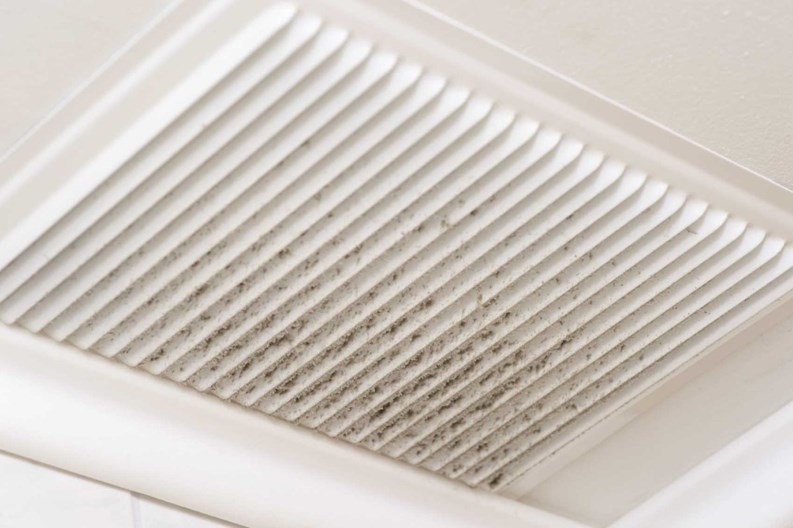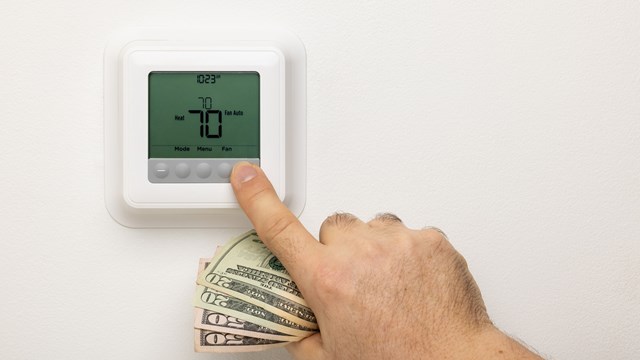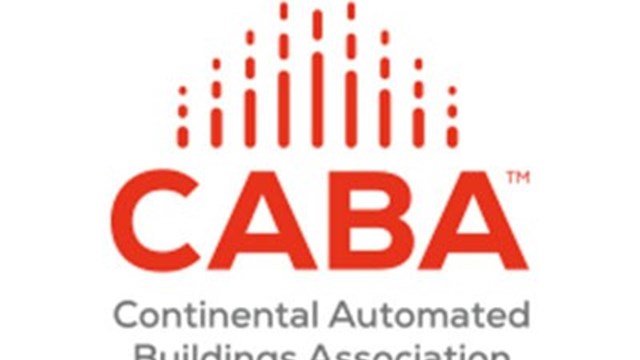Keeping indoor air clean is critical to maintaining a healthy environment. The inner workings of a building’s operating system is often a mystery to the untrained person or board member. Since it’s easier to determine the cleanliness of common rooms such as garbage and recycling areas, more attention is often paid to keeping these shared spaces sanitary. However, there are no federal or state guidelines that require a building to have its air ducts cleaned, for example, and these systems often need attention because danger could be brewing from within.
“Dirt accumulation is very common in homes and buildings. This dirt and debris enters the ductwork through the return registers. Some of this dirt is captured in the filters located in the HVAC unit,” says Tim Bray, owner of the Hammonton-based Air-Vent Duct Cleaning, Inc. “Depending on the type of filtration and the frequency in which it is cleaned or changed, some of the dirt and debris can travel past the filtration system and ultimately end up back in the conditioned space.”
A recent Harvard study showed that 100 percent of homes tested for indoor air pollution had at least one air quality concern—and most had more than one. The following facts are not pleasant, but they underscore the potential health issues associated with poor indoor air quality. For example, it’s estimated that there can be as many as 42,000 dust mites living in every ounce of dust. On average, dust mites leave fecal droppings about 20 times a day. Add mold spores, pet dander and cigarette smoke to the environment and allergens increase exponentially.
“Indoor air is very different than outdoor air,” says Kristy Lee, technical director of Rockville, Maryland-based Indoor Environment Communications. “Indoor air is not circulating or being refreshed so if there is any kind of problem in a building such as mold or dust or anything like that it becomes an irritant, gets worse and keeps getting circulated throughout the building.”
The Environmental Protection Agency (EPA) finds that there is not enough knowledge currently to determine whether or not air duct cleaning actually prevents health problems. Additionally, studies have not conclusively demonstrated that particle levels in homes increase because of dirty air ducts. However, the EPA does state that “it makes no sense to clean ductwork if air handlers are left untouched. Air ducts deliver exactly what an air handler drives, and if the ductwork is dirty, so are the air handler’s guts.”
Poor Air Quality
“Air duct cleaning” is a general term because a complete cleaning of a heating, ventilation and air conditioning system (HVAC) means all components of the forced air system. So, often the first step is to understand options. Air duct cleaning, for example, means all duct-work, vents and grilles, essentially only those components that distribute airflow. Conversely, air handler or HVAC cleaning includes all of the heating and cooling machinery, but not the duct-work.
Solomon Freud, owner of the Staten Island, New York-based Chutespan, Inc, says that often times the practice of cleaning air ducts is overlooked as an “out of sight, out of mind” issue. But there are countless irritants that could be impacting air quality. These include tobacco smoke, pet dander and failing ventilation systems not to mention rodent and insect fecal matter. Not only does this often result in tenant allergies but lost monies due to failing machinery.
“Costs involved include reduced efficiency of HVAC systems and roof fan ventilators, blow-back of dirt when timer-controlled fan systems turn on and off thereby leading to tenants covering up dirty vents and ultimately leading to mold and mildew growth and serious health issues that follow,” says Freud. “By not cleaning the system properly dust mites that cling to dust and a wide array of dirt particles build up and residents wind up breathing these contaminants and exacerbating their allergies.”
Seek Certified Experience
Since every building is different, it is difficult to determine exactly how long it takes for debris build-up to occur in air ducts and trash chutes, explains Anthony Paterno, owner of Anthony Paterno Duct Cleaning which has served central and northern New Jersey for the last 25 years.
“Every building is different in terms of build-up but it (the system) should be cleaned every two to three years,” says Paterno. “Most people are not educated as to what is making them sick in terms of indoor air quality. Just because you can’t see it, doesn’t mean it’s not there and a lot of people suffer from allergies from things like dust, mites and mouse droppings. ” He continued. “If you didn’t clean your kitchen floor for twenty years, what would it look like? It’s the same concept with cleaning ducts.”
For many boards, pulling the trigger and hiring a cleaning company is often a last resort spurred by a resident or employee complaining of illness. Most often a building superintendent will conduct sight reviews of the system. The EPA states that “if after a visual inspection of the inside of the ducts, you see no indication that your air ducts are contaminated with large deposits of dust or mold (no musty odor or visible mold growth), having your air ducts cleaned is probably unnecessary.”
Finding the right company is an equal challenge as there are many fly-by-night companies known for doing substandard jobs and often making matters worse. Any company operating without certification from the National Air Duct Cleaners Association (NADCA) should be considered suspect.
“There are a lot of fly-by-night organizations that low ball the price but aren’t doing the job right,” says Paterno, a member of NADCA as is Bray and Freud. “Most of the companies that are members of the National Air Duct Cleaners Association are reputable.” Paterno adds that he regularly attends conferences and continues his education. “I’ve always been a hard worker and good at what I do, but I have learned a great deal more since beginning in this industry.”
As a way to confront scam artists, NADCA teamed with undercover investigator Chris Hansen and Dateline NBC to expose fraudulent companies. “These scams are a problem for consumers and legitimate businesses alike. The low-price coupons offered by these bad actors make it difficult for consumers to know what to expect, while also luring business away from legitimate companies. Consumers often end up paying more than necessary without getting their money’s worth,” said NADCA executive director John Schulte.
NADCA recommends that commercial consumers ask the following questions: If there is any remediation of mold or other biological contamination does the company have a Ventilation System Mold Remediator (VSMR) on staff? Will the company be assigning an Air Systems Cleaning Specialist (ASCS) to your project that will be responsible for the complete project? Will the contractor provide you with a means to conduct a visual inspection at any time during the cleaning (mirror and flashlight, camera or other remote visual systems)?
Best Practices
Freud explains that his company’s approach includes a floor-to-floor evaluation and visual inspection which identifies any required repairs or potential hazards. “If repairs are needed or hazards present, we will provide management with a detailed report of our findings as well as recommendations as to the best methods of repair,” says Freud. “We can follow up with a proposal for repair or replacement of the compactor or chute doors, for example.”
Pricing runs the spectrum depending on respective variables, notes Bray. “The number of units, amount of duct work, access to each duct, the size of the building, location of the units, the building use classification, must all be taken into consideration for determining the cost of an inspection or cleaning.”
Applying a timetable to duct and chute cleaning is difficult as it depends on the number of units in the building and the condition of the existing environment, notes Paterno. “It really does depend as we have done houses to hospitals, large condominiums and small co-ops.” On a three to five bedroom house, for example, I usually send two men at $200 per hour and the job might take two to four hours. A single unit condominium unit might be similar but again it depends on certain factors.”
All buildings, but especially high-rises, have issues with trash chutes. While recommended to clean at least once a year, depending on use, problems can arise more frequently. “Chutes that are not regularly cleaned will build up grease and grime with leaking garbage onto the chute walls and compactor machines and compactor rooms below,” says Freud. “Noxious odors and fire-hazardous grease combine to cause a prime-breeding ground for roaches, insects and odors. Regular steam cleaning of the chutes and quarterly roach dustings and deodorizing help maintain a healthy roach and vermin-free environment.” He adds that a typical price per floor for chute cleaning runs $70 to $90 but it depends on the height of the building, among other factors.
The majority of clients do not have services on retainer. From a board’s perspective there are pros and cons to this approach. With budgets tightening, it is a way to satisfy the bottom line but preventing possible mounting health issues should be an equal concern. “Most projects are based on a specific job, however many larger companies are proactive in maintaining clean HVAC systems and are interested in periodic inspections or cleaning,” says Bray.
Poor indoor air quality can be responsible for everything from eye irritation to throat dryness and itchy skin to chronic sinusitis and asthma. So it makes sense to adhere to a preventative maintenance schedule for your air ducts and vents, if not only to save energy, but to help all your residents breathe a little easier when they get home.
W.B. King is a freelance writer and a frequent contributor to The New Jersey Cooperator.







Leave a Comment